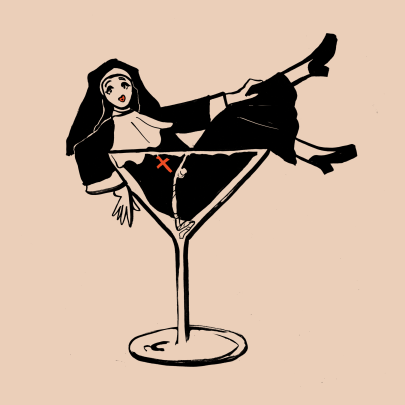Mar 6, 2014 Theatre
Bach Collegium Japan
Michael Fowler Centre, Wellington
March 5, 2014
Woman in fur coat: again, I’m so sorry I trod on your toe. In my defence, you were trying to push past me in the queue. In your defence, it wasn’t so much a queue as an uneasy mob. I was definitely in front of you, though.
Bach Collegium Japan are as good as their rep, and their rep could hardly be better. It took me a little while to work this out. The St John Passion opens with one of the great choral battering rams in all of music: over a surging churn of strings and wind, the full forces of the choir call out to God in three staccato minor chords. It’s an opening that suggests a grand fracturing of the world; and in fact the Passion is about precisely that. I typically play it turned up to 11, and when I hear it live I want to be overwhelmed, which is a problem when the group on stage is a little original instruments ensemble using the authentic forces of Bach’s day.
By the standards of the authenticity movement, my desire for those three opening chords to hit me hard in the chest is decadent and misses the point: the force of them is in their dissonance not their volume. The purity of this position is attractive, and the purity of BCJ’s sound is even more so, but I can’t pretend I found the opening satisfying.
It took me maybe 10 minutes to start hearing how precisely attentive Masaaki Suzuki’s musicians were to the demands of the music, and we were well into the first half of the two-hour performance before the real alchemy of it hit me: a thousand little subtleties of detail transmuting into gold. This was magnificent Bach. I really hope fur coat woman got her programme.
The thing about Bach’s two Passions – he probably wrote more, but only St John and St Matthew have survived – is that they present the text of the gospel accounts of Christ’s crucifixion. The greater part of each of them is recitative, quasi-melodic speech-singing periodically interrupted by solo arias and full-chorus chorales.
Many of the arias and chorales are famous; they jump out at you in performance the way the better known soliloquies jump out of Shakespeare’s plays. The recitative doesn’t do this. It shapes itself to the text. It serves the text. It is the text. To appreciate the quiet genius of it – the way Bach brings out the drama of the story, which is at once a story of betrayal, torture and death, and the story of God’s miraculous intervention in the downwards spiral of human self-destruction – you need either to speak German (I don’t), or to have a dual-language version of the text in front of you as you listen. This is not optional. Without the ability to see how the not-very-tuneful music shapes itself to the German and reflects its meaning, all you’ll hear is an endless river of not-very-tuneful.
This means that in the absence of surtitles, which this performance did not feature, you need to have the text provided in the programme. The festival programmes did do this, but they were a $10 extra –outrageous for something so essential, given the price of the tickets – and they were only available via two small kiosks, which were, unsurprisingly, mobbed.
Result: the hard-working festival volunteers were entirely overwhelmed, tempers frayed, the performance started late, and I trod on fur coat woman’s toe as she tried to push past me. (The “performance about to commence” bell had just rung. Naturally we panicked.)
The lion’s share of the recitative falls to a tenor soloist called the Evangelist, a role BCJ gave to the extraordinary Gerd Türk. Quietly dapper in a long Japanese surcoat, he stayed in the middle of the stage for the entire performance while other soloists slipped out of the chorus and walked down to join him for their arias. (Drawing four of the five soloists from an 18-strong chorus lent a powerful organic quality to the singing, in that the solo voices – especially that of soprano goddess Joanne Lunn – were easily discernible in the chorales.) Türk is not a showy singer, though he can put enormous power into his fortissimo when he needs to; yet the cumulative effect of his singing is purely spectacular. Every syllable has a different weight.
At one point he shaded his voice so that a parenthesis in the text became just sufficiently sotto voce to register as a parenthesis in the music, while still maintaining the overall line of the larger phrase he was interrupting. Try doing that at home.
Between them the Evangelist and the orchestra provide the smooth-flowing narrative river into which the sudden flurries, surges and serene calms of the arias and choruses intrude. The orchestral playing was crisp and perfectly responsive – more and more as the evening progressed, I found myself liking the astringent quality of the instruments, hard-edged and slightly lacking in vibrancy to a modern-instruments-attuned ear, and the ensemble discipline was flawless. The second of Lunn’s two solos (“Dissolve, my heart, in floods of tears”) was the still centre of the evening, full of grief and gorgeous purity of sound: all the power I’d looked for and failed to find in the opening was suddenly there in the music. I didn’t want to breathe.
BCJ present three lesser-known Bach works tonight. Be there if you can.





